The school of Bauhaus was the first school of modern design based on the cooperation between students, famous artists, designers and craftsmen.
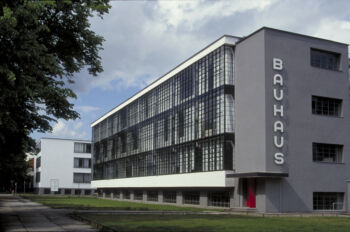
Image source:https://search.creativecommons.org/photos/f6c2a54c-a014-4882-ba77-e17b39262ceb by MCAD Libraryw
The Bauhaus School
The Bauhaus, Staatliches Bauhaus in German, was a school of architecture, design and applied arts. It was founded in Weimar in 1919, then moved to Dessau from 1925 to 1933, and in the end it was placed in Berlin. The Bauhaus was founded by the architect Walter Gropius, who directed the Bauhaus school for the first years. In 1925, in Dessau, Gropius projected a new building for the school that was modern, original, and became the symbol of Bauhaus. It was built to manage in the best way studios, classrooms and offices, with big windows and a “L” configuration to optimize the light.
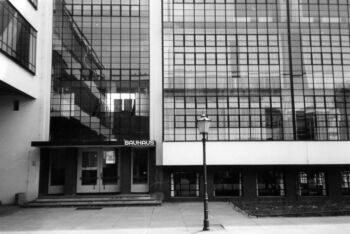
Image source: https://search.creativecommons.org/photos/67ba4f37-5544-44b3-94ef-5b1c60777a44 Author:Sludge G
In 1930 Ludwig Mies van der Rohe became director, but had to shut down the school because of the raise of Nazi regime. However, he opened a New Bauhaus in Chicago in 1937.
The Teachers
Important artists who taught at Bauhaus:
- Walter Gropius
- Lyonel Feininger
- Johannes Itten
- Paul Klee
- Wassily Kandinsky
- Oskar Schlemmer
Their teaching style was based on pedagogy and inclusive standards. Additionally, they admitted women and students from every social class. At the beginning, students had to attend some courses for six months, held by two people. Some of them were Paul Klee for painting and stained-glass, Wassily Kandinsky for wall painting, Oskar Schlemmer for sculpture, Marcel Breuer for interior, Lyonel Feininger for graphic arts, Herbert Bayer for typography and advertising, Gerhard Marcks for pottery, and Georg Muche for weaving.
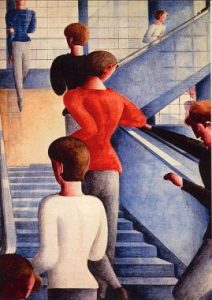
Image source: https://commons.wikimedia.org/wiki/File:Oskar_Schlemmer_-_streppe_1932.jpg
The Courses
The cabinetmaking workshop was one of the most popular in Dessau, and the director was Marcel Breuer. Using the extruded steel tubes, he designed his most famous chair.
Another popular workshop was the textile one of Gunta Stölzl. In this course, students studied color theory, design and the practice of weaving. Also, they used some untypical materials, like fiberglass, cellophane and metals.
Metalworking workshop was directed by Marianne Brandt, Wilhelm Wagenfeld and Christian Dell, who created a new category of products: lamps.
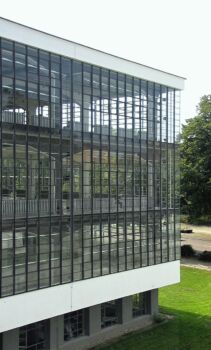
mage source:https://commons.wikimedia.org/wiki/File:-Dessau_Werkst%C3%A4tten.jpg

Image source: https://commons.wikimedia.org/wiki/File:Marcel_breuer_con_stoffe_di_gunta_st%C3%B6lzl,_sedia,_1922_01.JPG
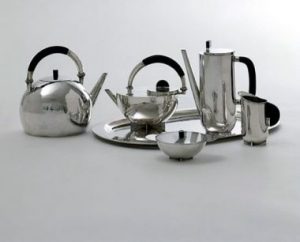
Image source:https://search.creativecommons.org/photos/5491b67e-be9f-4408-a237-feaf4a9055f8 by moonoa
The Style
The style of Bauhaus products was very elegant, geometric and based on the ideal of a modern design. Therefore, most pieces were beautiful and accomplished for the mechanism of mass production.
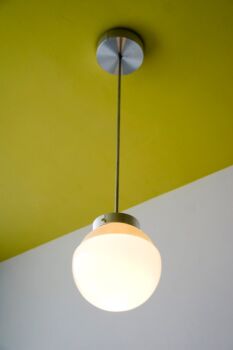
Image source:https://search.creativecommons.org/photos/9412a661-0cad-407b-88f5-a27e5412a726 by oswaId
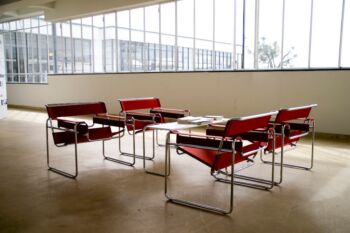
Image source: https://search.creativecommons.org/photos/affb4f80-b765-465b-8845-106aa92b8471 by oswaId
Site sources:
